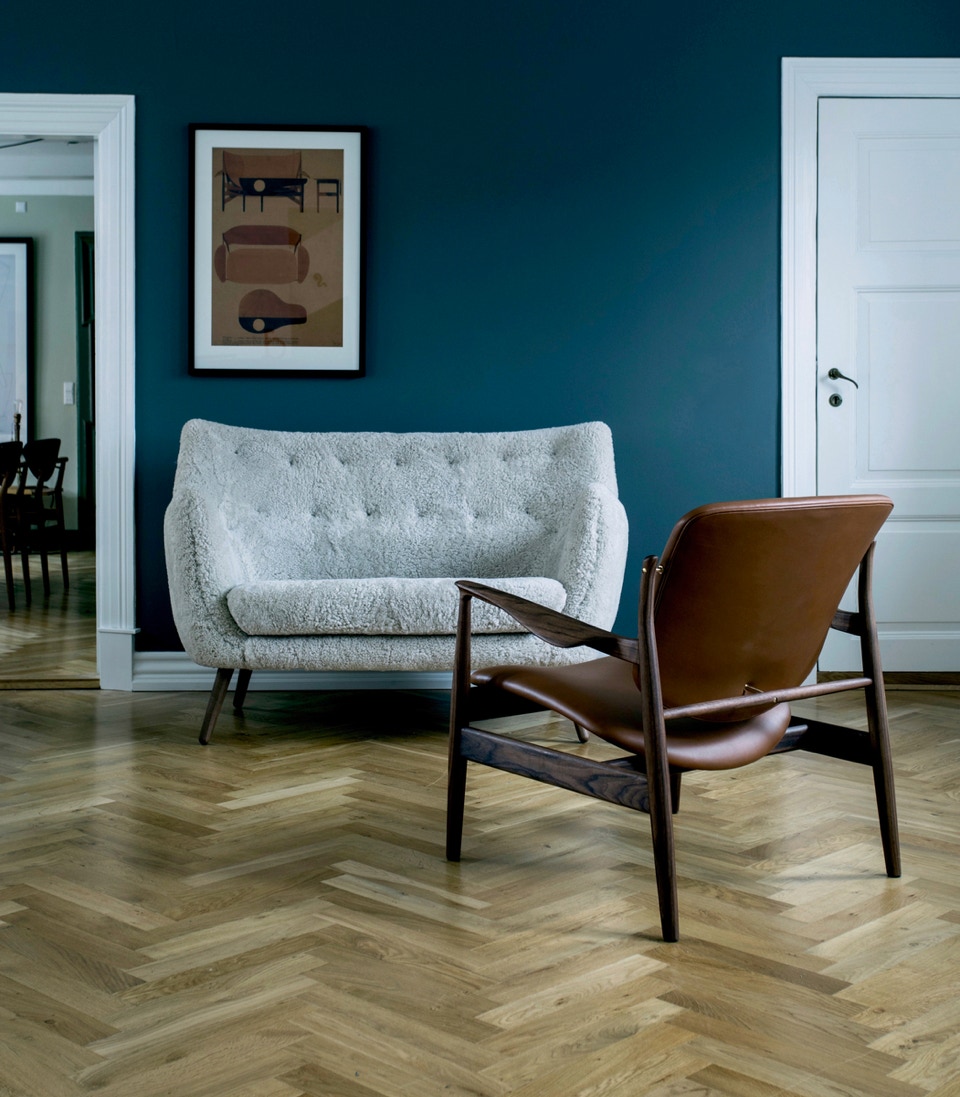
This small two-seater Poet Sofa first saw the light of day at the Copenhagen Cabinetmakers’ Guild Exhibition in 1941. It should be seen as a natural progression from the Pelican Chair that was displayed the previous year. The upholstery is very slim compared to the norm at the time and it was the result of Finn Juhl’s ambition to create functional furniture for smaller apartments.
The Poet Sofa is also one of Finn Juhl’s experiments for his own home. At the Guild Exhibition, the sofa was shown together with a couple of plaster reliefs by artist Sigurjón Ólafsson. In this way, he indicated the link between furniture and sculpture. The small sofa is a very comfortable embrace for two people, who will be sitting comfortably close.
The small sofa received its name much later, in 1959, when a popular Danish cartoonist depicted the exact sofa as the place where a young poet would withdraw to contemplate the complexities of life.
The Poet Sofa is available in the same execution as the Pelican Chair - with handsewn upholstery in fabric or leather and with legs in oak, walnut or black painted.
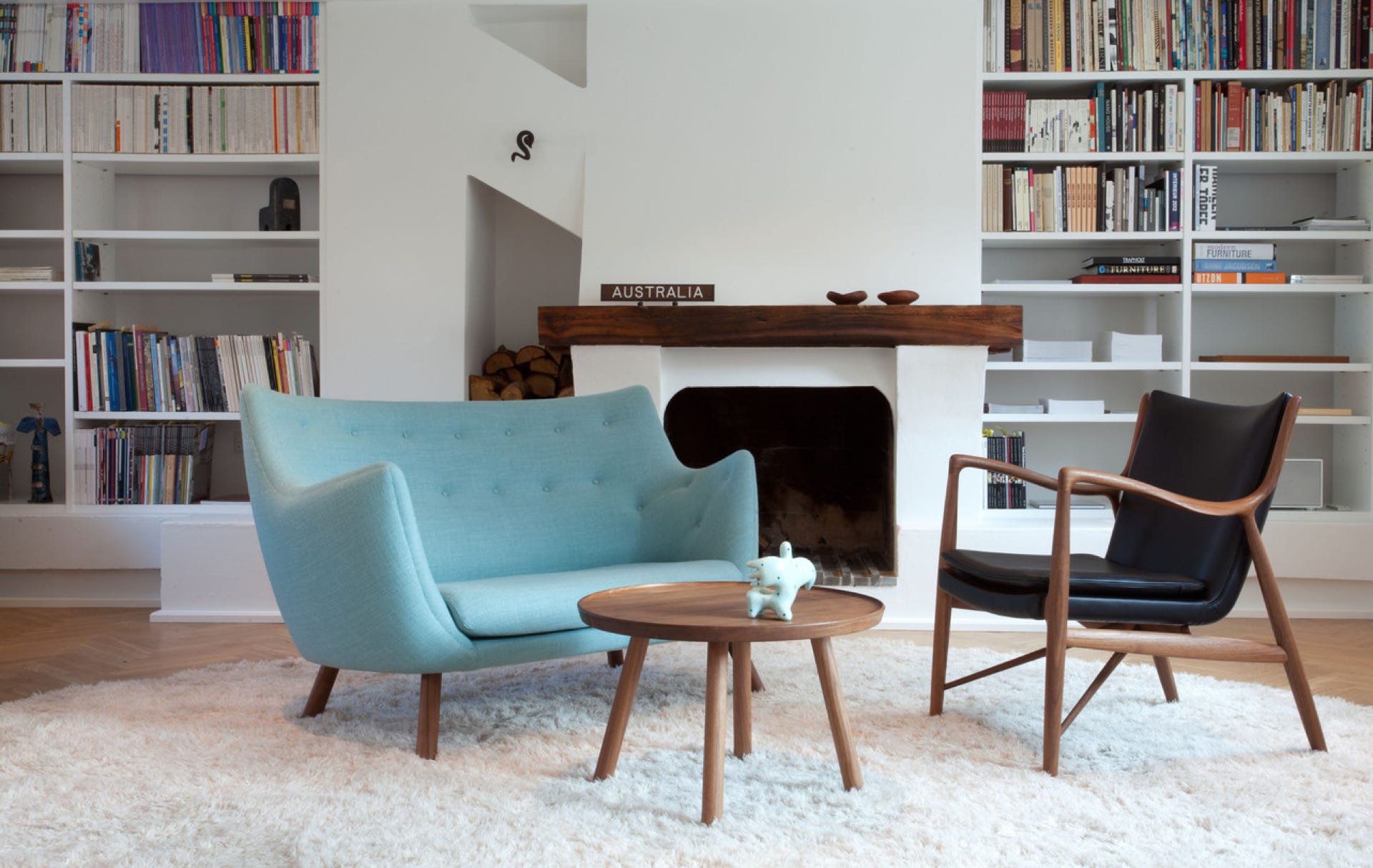
Legs oak, walnut or black – Dimensions H87 x L136 x P80 cm – Seat height 38 cm
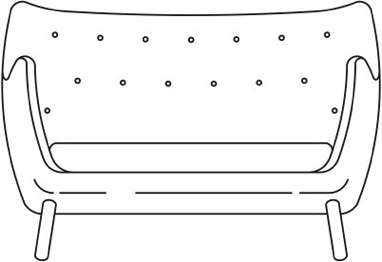
Poet sofa
from









oiled oak
oiled walnut
black painted
exemples:
Moonlight sheepskin
Watercolour Soft Linen
Watercolour Rose Quartz
Watercolour Pumpkin Spice
Watercolour Peacock
Watercolour Himalaya
Watercolour Golden Syrup
Watercolour Fresh Sage
Watercolour Dark Conifer
Watercolour Cast Iron
Watercolour Butterscotch
Watercolour Silver Azure
Remix 933
Remix 823
Remix 762
Remix 443
Remix 612
Remix 412
Remix 242
Hallingdal 980 + Hallingdal 960
Hallingdal 764 + Hallingdal 110
Hallingdal 457 + Hallingdal 100
Vidar 1511
Vidar 723
Vidar 1062
Vidar 582
Vidar 633
Vidar 443
Vidar 472
Vidar 182
Vidar 152
Pelican Table
Materials oak or walnut Dimensions Ø63 x H45 cm
Pelican Table – Oak
Pelican Table – Walnut
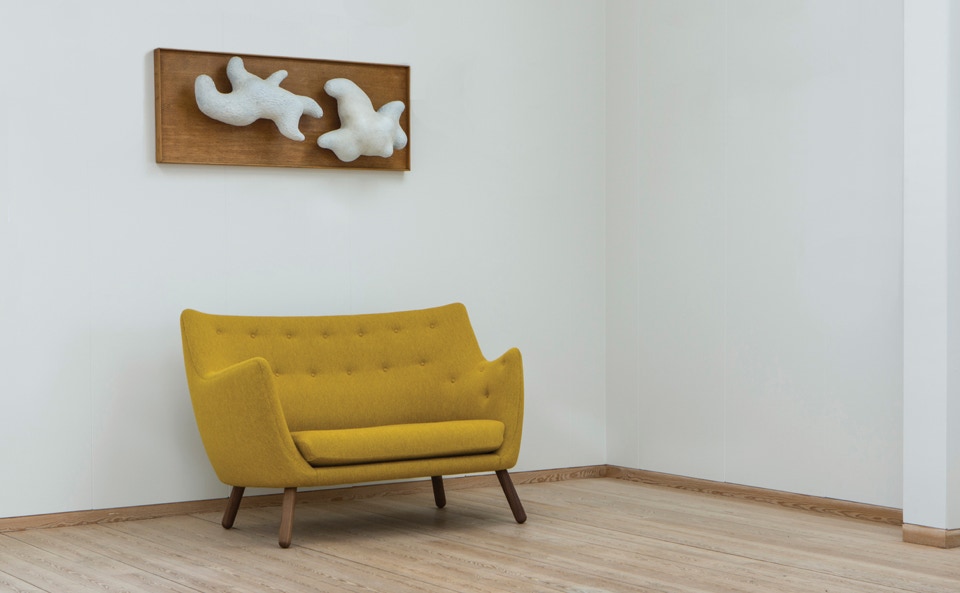
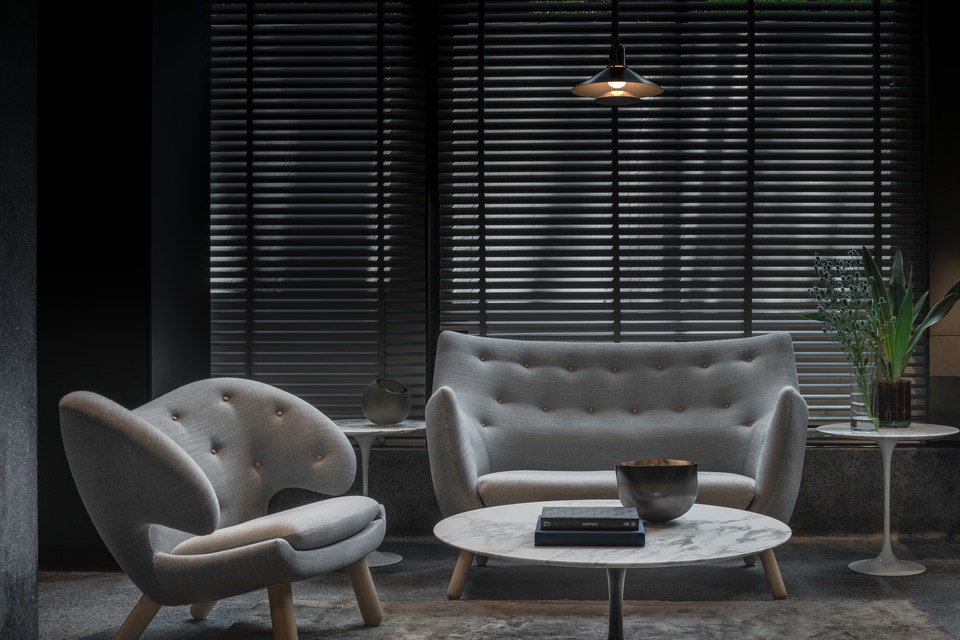
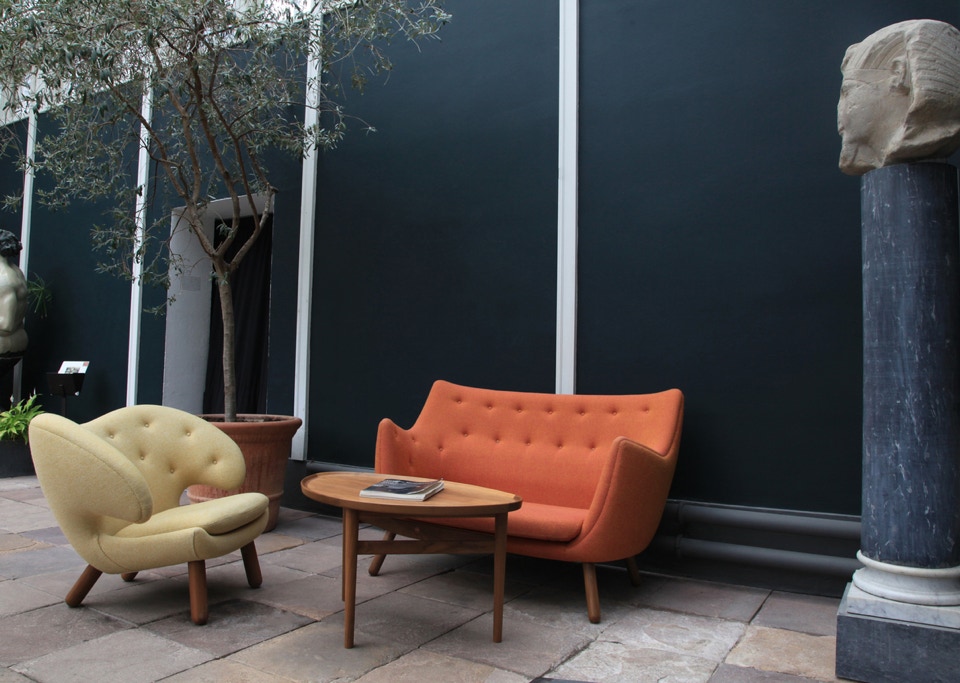
Finn Juhl
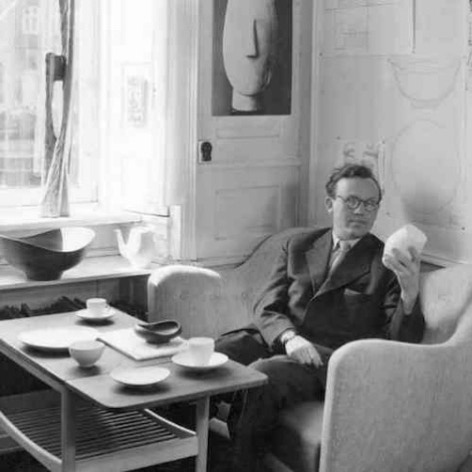
As a teenager, Finn Juhl (1912-1989) wanted to become an art historian, having a passion for the fine arts since childhood. His father stopped him and Finn Juhl started architectural studies. Later, when his fame as a designer of furniture acquired, he speaks of himself as an autodidact, in reference to this upset vocation that forced him to walk intellectually on a lonely way. His style owes much to this singular trajectory, with its non academic interpretation of art visible in his work. Finn Juhl started his studies in 1930, a key period which saw the birth of modern design and furniture.
His modern offices in central Copenhagen was greeting his visitors with a huge Japanese fish in paper, symbol of imagination. Rather than thinking in terms of practical construction, Finn Juhl had the mind-set of a sculptor, when he shaped a piece of furniture. In the 1940s and 1950s, this way of working had never been seen before. His ambition was to design furniture with movement and life.
Juhl took pride in making both the structurally supportive elements of the furniture and the seated person look as though they are floating. In some of his chairs, the backrest and the seat are almost invisibly joined, as if they were clouds floating through the room.
In creating his furniture, Finn Juhl worked with two elements: The carrying element, and the carried. He eventually became known for his special ability to separate the bearing parts from the borne. This is one of many examples of how he broke free from conventional working methods and found his inspiration in art.